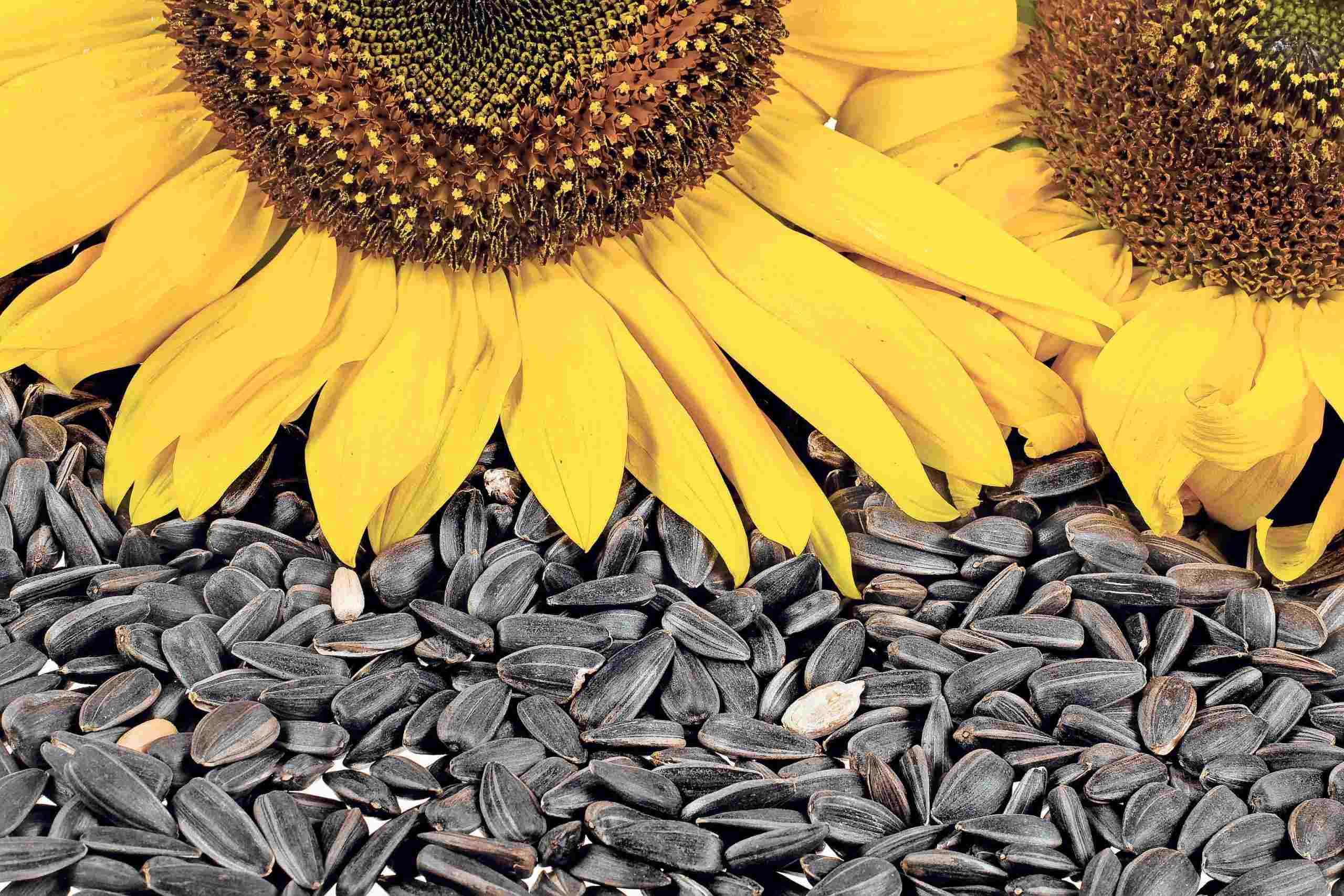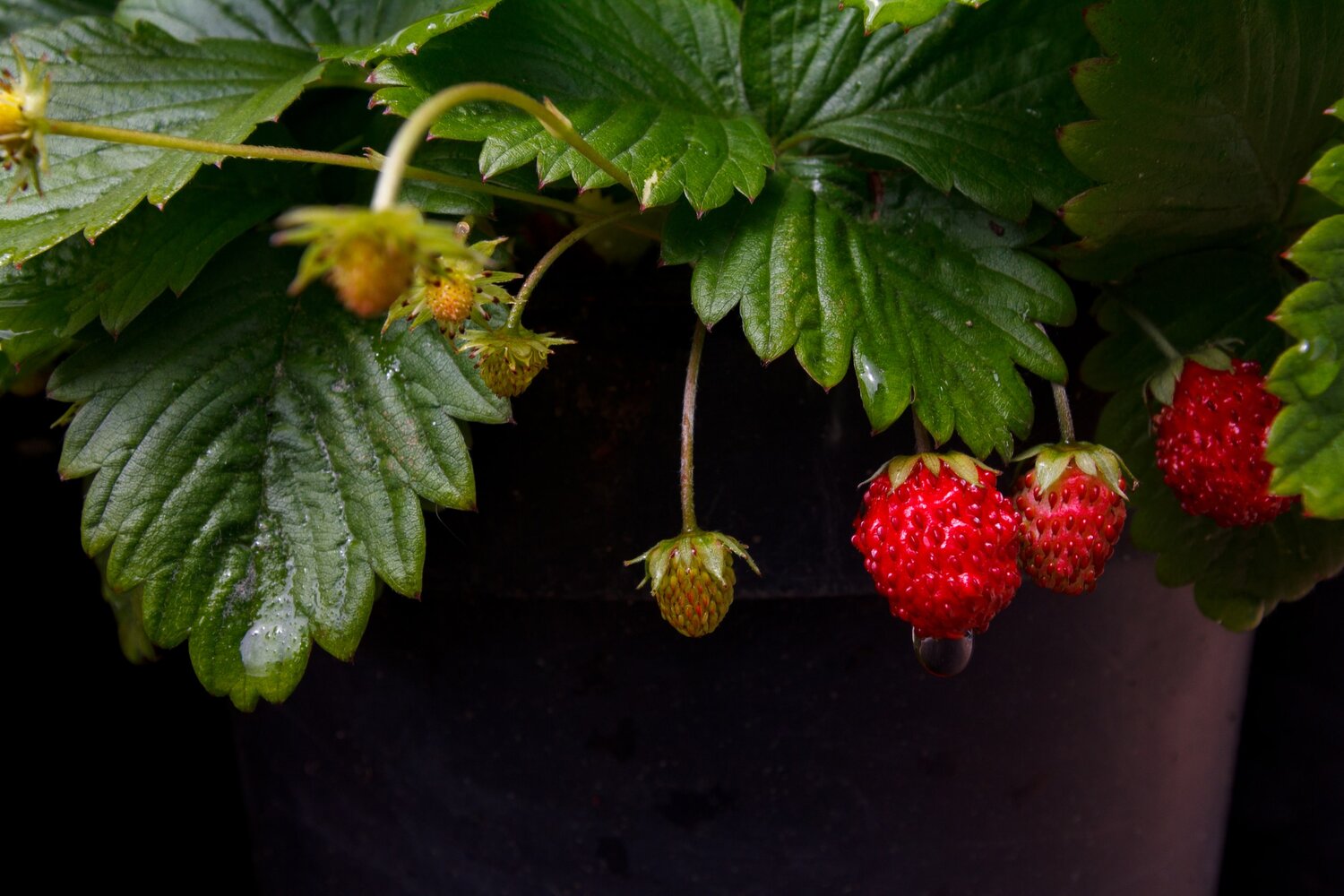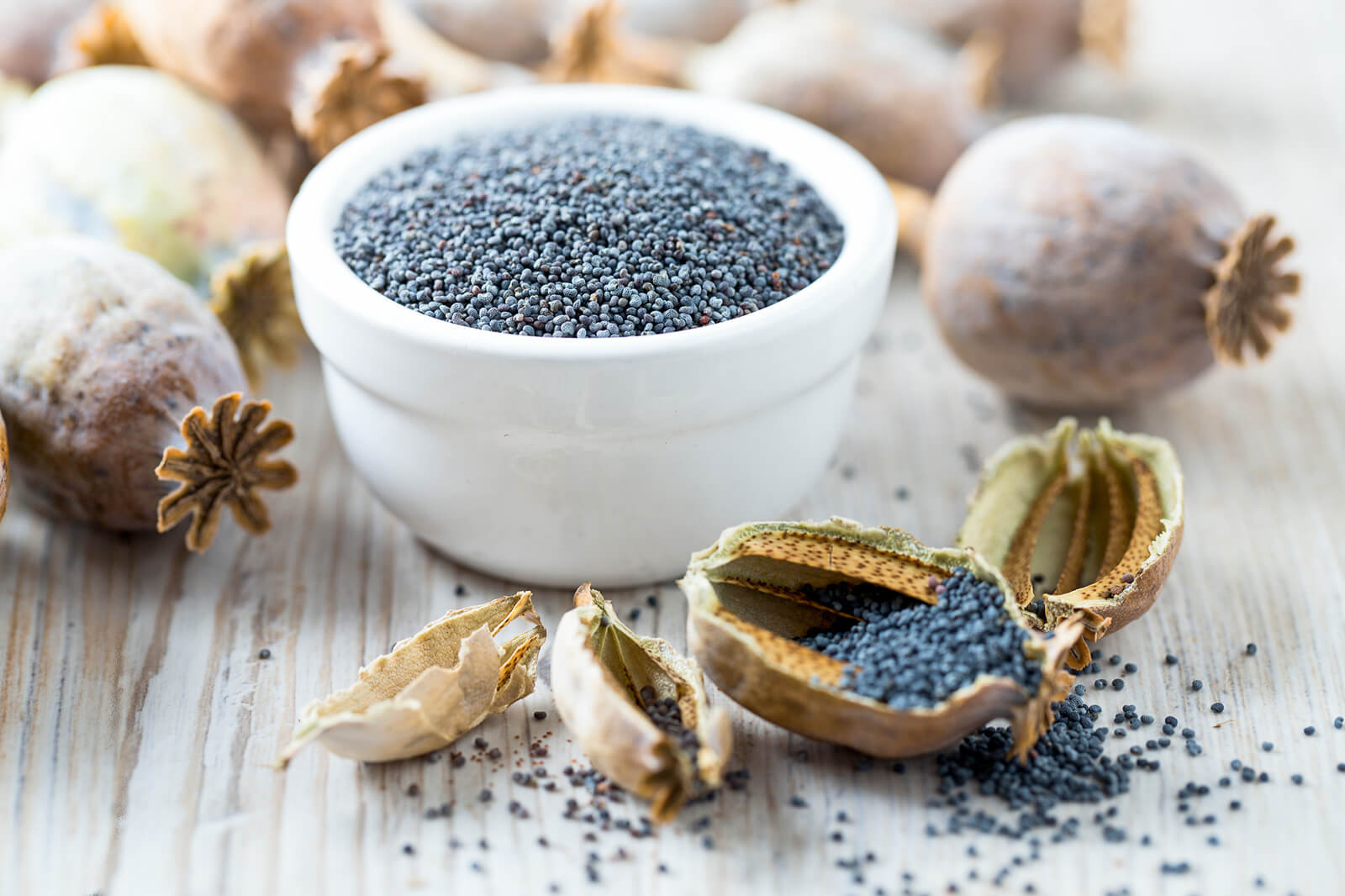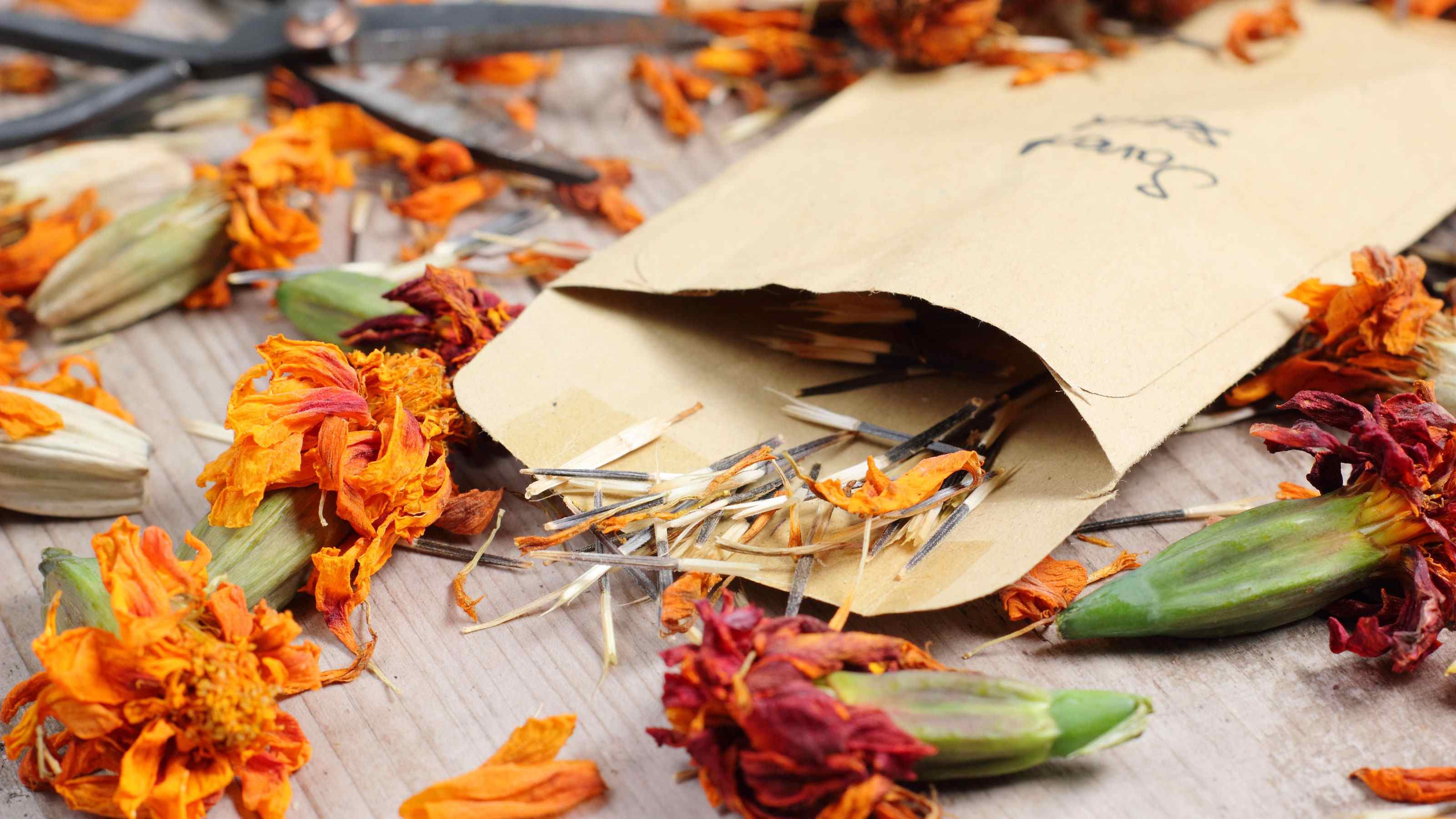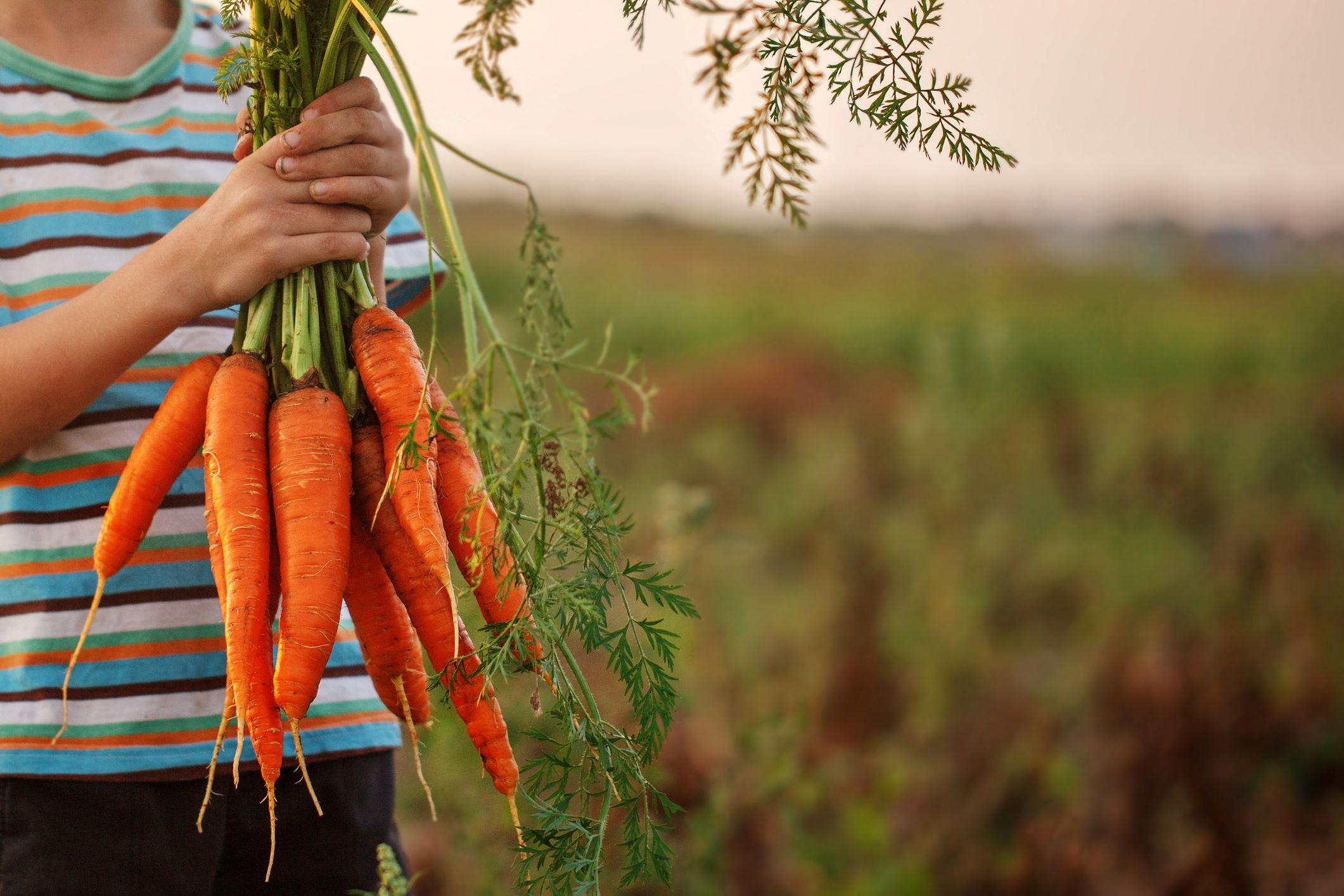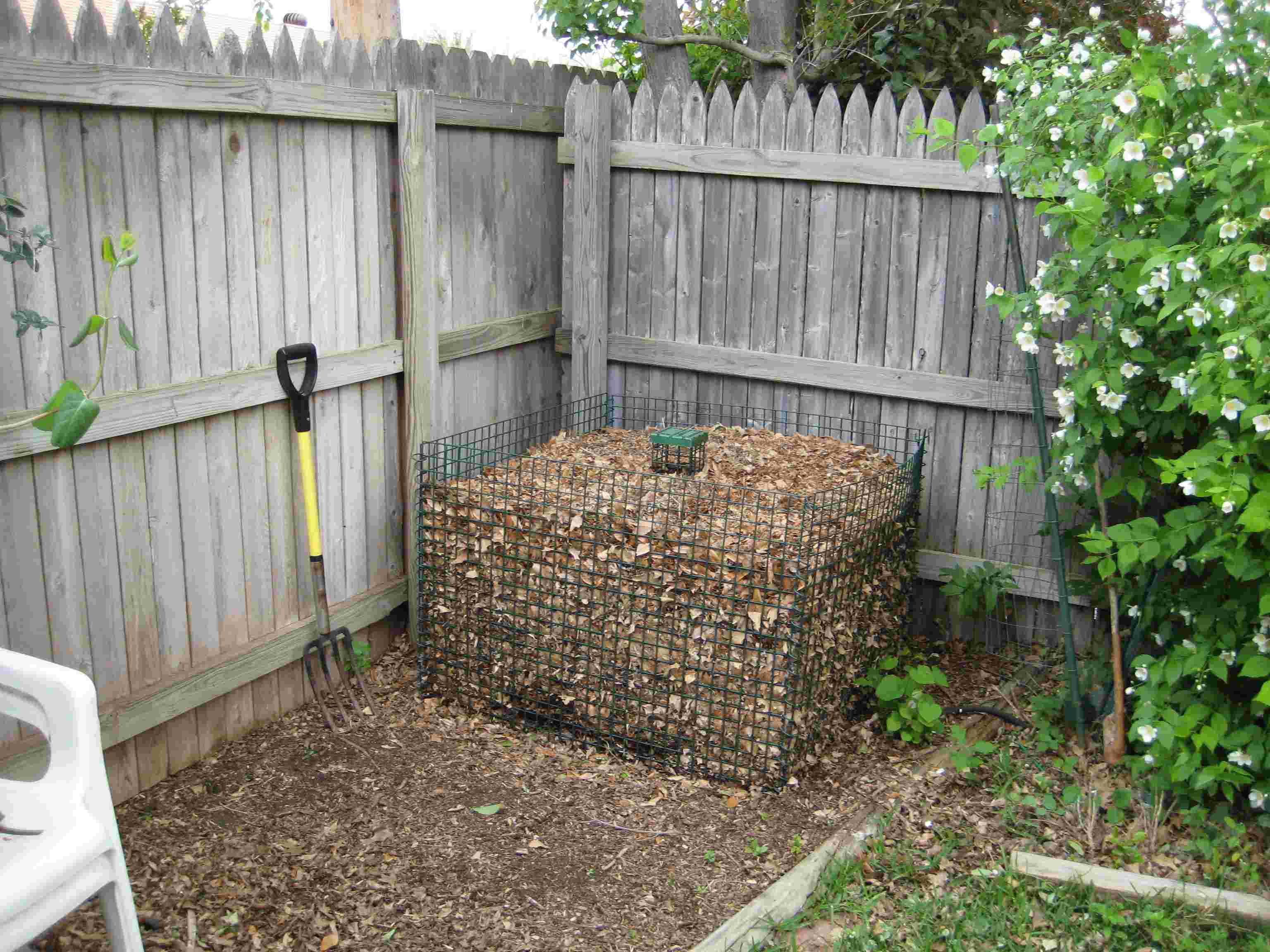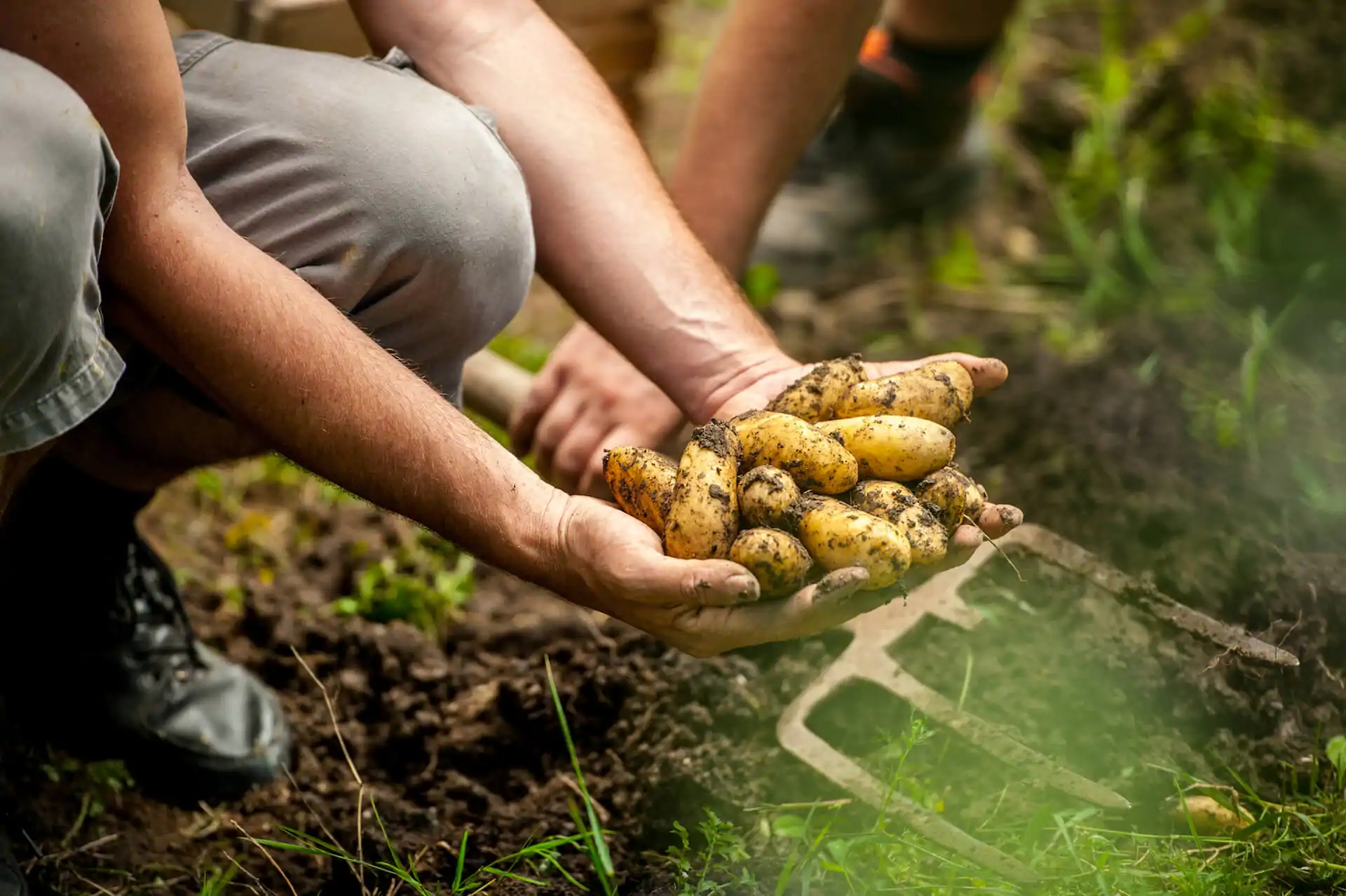Home>Gardening Techniques>Plant Care>How To Harvest Your Herbs


Plant Care
How To Harvest Your Herbs
Modified: January 22, 2024
Learn the best plant care techniques to harvest your herbs successfully. From pruning to watering, discover the secrets to growing healthy and flavorful herbs in your garden.
(Many of the links in this article redirect to a specific reviewed product. Your purchase of these products through affiliate links helps to generate commission for Chicagolandgardening.com, at no extra cost. Learn more)
Table of Contents
Introduction
Welcome to the wonderful world of herb gardening! Whether you’re a seasoned gardener or just starting out, growing your own herbs can be a rewarding and fulfilling experience. Not only do herbs add a touch of freshness and flavor to your meals, but they also have numerous health benefits and can be used for a variety of purposes, such as making herbal teas or crafting natural remedies.
In this article, we will guide you on how to properly harvest your herbs to ensure their optimal flavor and potency. From determining the right time for harvest to storing and preserving your precious herbs, we will cover all aspects of the process to help you make the most of your herb garden.
Before we delve into the specifics of harvesting, it’s important to understand the importance of properly preparing your herb garden. Providing the right growing conditions, such as adequate sunlight, well-drained soil, and proper spacing, can significantly improve the quality and yield of your herbs. Additionally, regular watering and the use of organic fertilizers can promote healthy growth and enhance the flavor of your herbs.
Once your herb garden is flourishing, it’s time to determine when your herbs are ready for harvesting. Different herbs have different growth patterns and optimum harvesting times. Some herbs, like basil and parsley, can be harvested continuously throughout the growing season, while others, like sage and rosemary, are best harvested in specific stages of growth. We will explore these nuances in the next section to help you identify the perfect time to harvest each herb.
Before you dive into the world of harvesting, it is essential to have the right tools and equipment on hand. You don’t need anything too fancy, but a few basic items will make the process much smoother. In the following section, we will discuss the tools you should have in your herb harvesting arsenal.
Now that you have your garden prepared, identified the right time, and gathered the necessary tools, it’s time to get hands-on with the harvesting process. In the next section, we will explore different harvesting techniques for various herbs, ensuring that you maximize the yield without compromising the health and future growth of your plants.
Preparing Your Herb Garden
Properly preparing your herb garden is essential for the successful growth and abundant harvest of your herbs. Before you start planting, there are a few key factors to consider to ensure optimal conditions for your herbs.
1. Location: Choose a location for your herb garden that receives at least 6-8 hours of direct sunlight per day. Most herbs thrive in full sun, although some, like mint and cilantro, can tolerate partial shade. Ensure that the chosen spot has good drainage to prevent waterlogged soil, as herbs prefer well-drained soil.
2. Soil Preparation: Before planting, prepare your soil by removing any weeds, rocks, or debris. Loosen the soil using a garden fork or tiller, and incorporate organic matter such as compost or well-aged manure to improve soil fertility and structure. This will provide a nutrient-rich environment for your herbs to grow and thrive.
3. Spacing: Consider the mature size of each herb and provide adequate spacing between plants. This allows air circulation, reduces the risk of disease, and prevents overcrowding. Typically, herbs should be planted about 12-18 inches apart, but consult the specific spacing requirements for each herb to ensure proper growth.
4. Watering: Herbs generally prefer moderate watering. Water the garden beds thoroughly after planting to settle the soil around the roots. Once established, water the herbs deeply and infrequently, allowing the soil to dry slightly between waterings. Avoid overwatering, as it can lead to root rot and other issues.
5. Fertilizing: Use organic fertilizers, such as compost or well-balanced organic fertilizers, to provide essential nutrients to your herbs. Avoid using high nitrogen fertilizers, as they can promote excessive leaf growth at the expense of flavor. Be mindful of the specific fertilizer requirements for each herb, as some may have specific needs.
6. Mulching: Apply a layer of organic mulch around the herbs to help retain moisture, suppress weeds, and regulate soil temperature. Organic materials like straw, shredded leaves, or bark mulch work well for this purpose.
By properly preparing your herb garden, you create a favorable environment for healthy herb growth. This sets the stage for a successful harvest and ensures that your herbs will thrive throughout the growing season.
Identifying When Herbs Are Ready for Harvest
Knowing when and how to harvest your herbs is crucial to ensure that you capture their optimal flavor and potency. Each herb has its own growth pattern and ideal harvesting time, so it’s important to familiarize yourself with these specifics.
1. Leafy Herbs: For leafy herbs like basil, parsley, and cilantro, you can start harvesting as soon as the plants have developed enough leaves to sustain growth. Harvest the outer leaves first, leaving the inner ones to continue growing. When harvesting, pinch off the stem above a leaf node to encourage bushier growth. Regular harvesting of leafy herbs promotes continuous production throughout the growing season.
2. Flowering Herbs: Some herbs, like chamomile and lavender, are valued for their flowers rather than their leaves. Harvest these herbs when the flowers have fully opened but are not yet starting to wilt or fade. This ensures that you capture the maximum fragrance and flavor of the flowers.
3. Woody Herbs: Woody herbs such as rosemary, thyme, and sage have a more robust structure and can be harvested at various stages of growth. For optimum flavor, harvest these herbs when their stems are firm and the leaves are fragrant. Take care not to remove more than one-third of the plant at a time to prevent damage to the overall health of the herb.
4. Root Herbs: Root herbs like ginger and turmeric are typically harvested at the end of the growing season, once the foliage has died back. Gently dig up the roots, brush off excess soil, and store them in a cool, dark place. These herbs can be used fresh or dried for future use.
5. Harvesting Frequent Herbs: Some herbs, like mint and chives, can be harvested frequently throughout the growing season. For mint, pick the leaves as needed, removing the stem tips to promote bushier growth. Chives can be cut back to about an inch above the ground, and new growth will appear within a few weeks.
When it comes to harvesting, always trust your senses. Look for signs of maturity, such as a deep color and firm texture. Additionally, lightly brush or crush a leaf to check for a strong aroma, indicating high essential oil content.
Remember that it’s better to harvest herbs earlier in the day when the oils are at their peak. Avoid harvesting immediately after rainfall, as the herbs may have excess moisture, which can affect their flavor and shelf life.
By understanding the specific signs of readiness for each herb, you can ensure that you harvest at the right time to capture their full flavor and benefits.
Tools and Equipment Needed
Having the right tools and equipment is essential for a successful herb harvesting experience. While you don’t need an extensive array of tools, a few key items will make the process more efficient and enjoyable. Here are some of the tools and equipment you should have on hand:
1. Pruning Shears: Pruning shears, also known as secateurs or garden scissors, are essential for precise and clean cuts. They are perfect for cutting woody herbs like rosemary or sage. Look for shears with a bypass or anvil blade design for more precise cuts.
2. Garden Knife: A sharp garden knife is useful for harvesting root herbs, such as ginger or turmeric, as well as for dividing and transplanting herbs. Opt for a sturdy, stainless steel knife with a comfortable grip for ease of use.
3. Harvesting Scissors: Harvesting scissors or snips are great for cutting leafy herbs like basil or parsley. They allow for quick and efficient harvesting while minimizing damage to the plant. Look for scissors with a spring mechanism for easy handling.
4. Harvesting Apron or Bag: An apron or a bag with multiple compartments is handy for keeping your tools close at hand while harvesting. It helps to keep everything organized and easily accessible, saving you time and effort.
5. Garden Gloves: Protect your hands from scratches and abrasions with a good pair of garden gloves. Look for gloves that provide both comfort and dexterity, allowing you to handle plants and tools with ease.
6. Garden Twine or Plant Ties: If you have sprawling herbs like tomatoes or climbing herbs like hops, garden twine or plant ties will come in handy for providing support and securing the plants to trellises or stakes.
7. Plant Labels: Plant labels are essential for keeping track of the different herbs in your garden. Use them to mark the names and planting dates of your herbs, ensuring that you can easily identify them when it comes time for harvest.
8. Harvesting Baskets or Trays: Once you’ve harvested your herbs, you’ll need a container to collect and transport them. Opt for lightweight baskets or trays that are easy to carry and clean.
Having these essential tools and equipment will significantly simplify your herb harvesting process. Remember to clean and maintain your tools regularly to prolong their lifespan and ensure smooth and successful herb harvesting seasons for years to come.
Harvesting Techniques
When it’s time to harvest your herbs, employing the right techniques ensures that you gather the best quality harvest while promoting the continued growth and health of your plants. Here are some harvesting techniques to help you make the most of your herb garden:
1. Leafy Herbs: For leafy herbs like basil, parsley, and mint, harvest the outer leaves regularly to encourage bushier growth. Use scissors or pruning shears to cut the stems just above a leaf node, leaving the inner leaves to continue growing. Avoid stripping all the leaves from a single stem as it can weaken the plant.
2. Flowering Herbs: Harvest flowering herbs, such as chamomile or lavender, when the flowers have fully opened but are not yet wilted. Cut the flower stems just above the foliage, leaving a few leaves intact to support the plant’s overall health and future blooms.
3. Woody Herbs: Woody herbs like rosemary, thyme, and sage can be harvested at different stages of growth. For optimal flavor and fragrance, snip the stems above a leaf junction to encourage new growth. Avoid cutting into the woody part of the stem, as it may be slow to recover. Regularly pruning these herbs helps maintain their shape and prevents them from becoming leggy.
4. Root Herbs: Harvest root herbs like ginger or turmeric toward the end of the growing season, usually when the foliage starts to die back. Gently dig up the roots using a garden fork or trowel, being careful not to damage the roots. Shake off excess soil and store the roots in a cool, dry place for future use.
5. Harvesting Seeds: Some herbs produce seeds that can be harvested for culinary or future planting purposes. Allow the herb to flower and develop seeds fully before harvesting. Place a paper bag over the seed heads and gently shake them to release the seeds. Store the seeds in a dry, airtight container for future use.
6. Drying Herbs: If you want to preserve your herbs for long-term storage, air-drying is a popular method. Bundle a small bunch of herbs together and hang them upside-down in a cool, well-ventilated area away from direct sunlight. Once the herbs are completely dry, store them in airtight containers in a dark, cool location.
Remember to harvest your herbs in the early morning when the essential oils are at their peak. Avoid picking immediately after rainfall, as excess moisture can affect the flavor and quality of the herbs. After harvesting, rinse the herbs with cool water to remove any dirt or debris and gently pat them dry before using or storing them.
By employing these harvesting techniques, you can ensure a bountiful and flavorful herb harvest while promoting the continued growth and vitality of your plants. Enjoy the fruits of your labor in culinary delights, herbal teas, or homemade remedies.
Storing and Preserving Herbs
Properly storing and preserving your freshly harvested herbs will help maintain their flavor, aroma, and potency for a longer period. Whether you choose to use them immediately or save them for future use, following these storage and preservation methods will ensure that your herbs stay vibrant and flavorful:
1. Fresh Herbs: If you plan to use your herbs right away, keep them fresh by placing them in a jar or vase filled with water, as you would with fresh flowers. Trim the ends of the stems to promote water absorption and change the water every few days. Cover the jar loosely with a plastic bag to retain moisture. Fresh herbs can last up to a week using this method.
2. Refrigeration: To extend the lifespan of your herbs, you can store them in the refrigerator. Rinse the herbs, gently pat them dry, and wrap them loosely in a damp paper towel. Place them in a perforated plastic bag or airtight container and store them in the vegetable crisper section of your refrigerator. This method can keep herbs fresh for up to two weeks.
3. Freezing: Freezing herbs is an excellent way to preserve their flavor for an extended period. Wash the herbs, remove any woody stems, and chop them finely. Place the chopped herbs into ice cube trays and fill them with water or olive oil. Once frozen, transfer the herb cubes into a resealable plastic bag and store them in the freezer. Frozen herbs can retain their flavor for several months, allowing you to enjoy their freshness throughout the year.
4. Drying: Drying herbs is a traditional preservation method that concentrates their flavors and allows for long-term storage. Gather your herbs in small bunches and hang them upside down in a cool, dry, and well-ventilated area, away from direct sunlight. Alternatively, you can use a dehydrator or place the herbs on a baking sheet in a low-temperature oven. Once dry and brittle, remove the leaves from the stems and store them in airtight containers. Dried herbs can last for up to a year when stored properly.
5. Herb Infused Oils and Vinegars: Create flavorful herb-infused oils and vinegars by placing clean, dry herbs into sterilized bottles and covering them with your choice of oil or vinegar. Seal the containers and store them in a cool, dark place for a few weeks to allow the flavors to infuse. Strain out the herbs before using or giving them as homemade gifts.
6. Herb Butter or Pesto: Make herb-infused butter or pesto by blending your herbs with butter or olive oil, garlic, and other desired ingredients. Place the mixture in an airtight container or roll it into a log using plastic wrap. Refrigerate or freeze for later use in cooking or as a spread.
Remember to label your herb containers with the name and date of harvest to keep track of their freshness. Store your herbs away from direct light, heat, and moisture, as these factors can degrade their quality over time.
By using these storage and preservation methods, you can enjoy the flavors and aromas of your herbs long after harvest, enhancing your culinary creations and enriching your herbal remedies.
Common Mistakes to Avoid
While growing and harvesting herbs can be a rewarding experience, there are some common mistakes that herb gardeners often make. By being aware of these pitfalls, you can avoid them and ensure the success of your herb garden. Here are some common mistakes to avoid:
1. Overwatering: One of the most common mistakes is overwatering herbs. Many herbs prefer well-drained soil, so it’s important not to water them excessively. Too much water can lead to root rot and other issues. Allow the soil to dry slightly between waterings and adjust the frequency depending on the specific needs of each herb.
2. Neglecting Proper Spacing: Planting herbs too closely together can lead to overcrowding, increased competition for nutrients, and poor air circulation. Pay attention to the mature size of each herb and provide adequate spacing to allow for healthy growth and prevent the spread of diseases.
3. Ignoring Pests and Diseases: Pests, such as aphids or spider mites, and diseases, like powdery mildew or fungal infections, can damage your herbs. Regularly inspect your plants for signs of pests or diseases and take appropriate measures, such as using natural pest control methods or applying organic fungicides, to prevent or manage infestations.
4. Harvesting Improperly: Harvesting herbs too late or too early can impact their flavor and potency. Learn about the optimal harvesting times for each herb and follow the recommended techniques to ensure the best quality harvest. Avoid stripping all the leaves from a single stem or cutting too much at once, as this can hinder the plant’s ability to regrow and diminish its overall health.
5. Neglecting Fertilization: Herbs, like any other plants, require nutrients to thrive. Neglecting to fertilize your herbs can result in poor growth and reduced flavor. Use organic fertilizers, such as compost or well-balanced organic blends, to provide essential nutrients and maintain the health of your plants. Be mindful of the specific fertilization requirements for each herb.
6. Poor Soil Preparation: Neglecting proper soil preparation can lead to suboptimal growth and decreased herb productivity. Take the time to prepare your soil by removing weeds, rocks, and debris, and incorporating organic matter to improve fertility and drainage. Well-prepared soil provides a solid foundation for healthy herb growth.
7. Not Rotating Crops: Growing the same herbs in the same location year after year can deplete the soil nutrients and increase the risk of pests and diseases. Practice crop rotation by changing the location of your herb plants each year. This helps prevent the buildup of pests or diseases and ensures the availability of essential nutrients in the soil.
8. Forgetting to Label Herbs: It’s easy to forget the names of different herb varieties, especially if you are growing multiple types. Label your herbs with their names and planting dates to avoid confusion and ensure that you can identify and care for them properly.
By avoiding these common mistakes, you can cultivate a thriving and productive herb garden that rewards you with a bountiful harvest of flavorful and aromatic herbs.
Conclusion
Congratulations on embarking on your herb gardening journey! By following the proper techniques for preparing, identifying, harvesting, storing, and preserving your herbs, you can enjoy a vibrant and bountiful herb garden throughout the seasons. Whether you’re adding fresh flavors to your culinary creations or harnessing the healing power of herbs for natural remedies, your efforts will be rewarded with a myriad of aromatic, flavorful, and beneficial herbs at your fingertips.
Remember to provide the right growing conditions, such as adequate sunlight, well-drained soil, and proper spacing, to ensure the healthy development of your herb garden. Determine the best time for each herb’s harvest and employ the appropriate techniques for gathering leaves, flowers, seeds, or roots, while promoting the continued growth of your plants.
Proper storage and preservation methods, including refrigeration, freezing, drying, and infusing, will enable you to enjoy the freshness and potency of your herbs long after their harvest. Avoid common mistakes such as overwatering, neglecting pest and disease control, improper fertilization, and poor soil preparation to ensure the vitality and productivity of your herbs.
Whether you’re a culinary enthusiast or an herbal wellness seeker, growing your own herbs is a fulfilling and sustainable way to enhance your cooking, teas, and remedies. Embrace the joy of nurturing and harvesting your herb garden and savor the flavors, aromas, and benefits that these remarkable plants bring into your life.
So, roll up your sleeves, gather your tools, and dive into the world of herb gardening. May your herb garden thrive and bring you endless delight!

